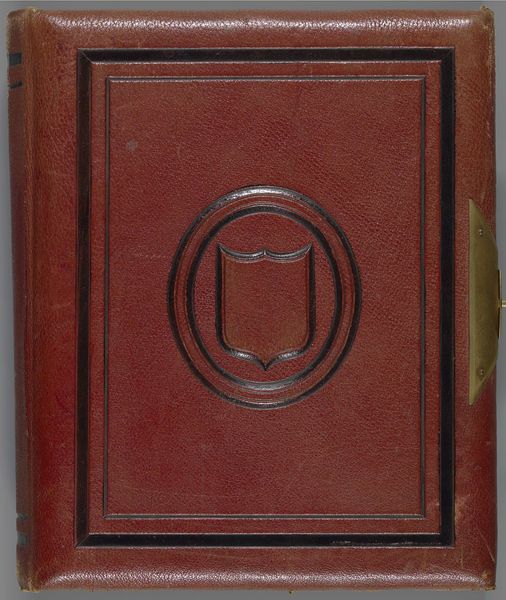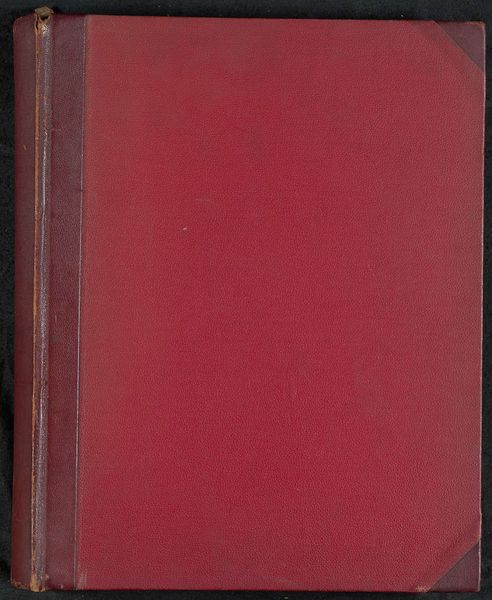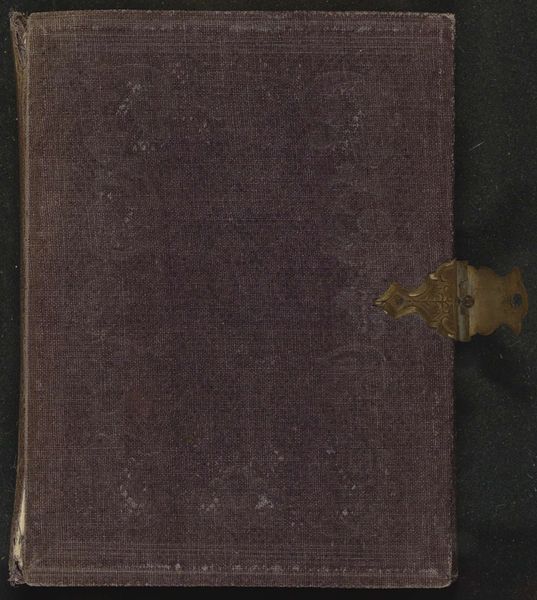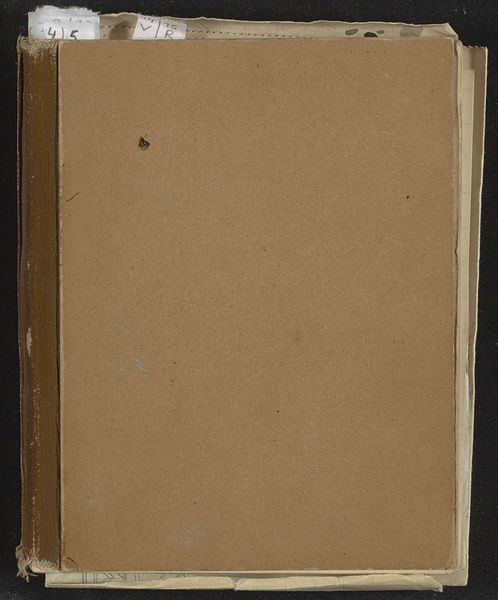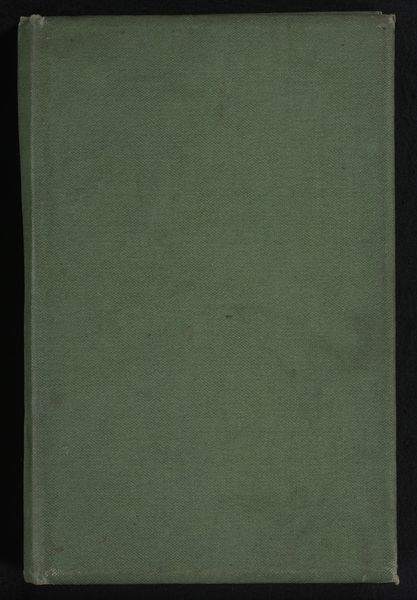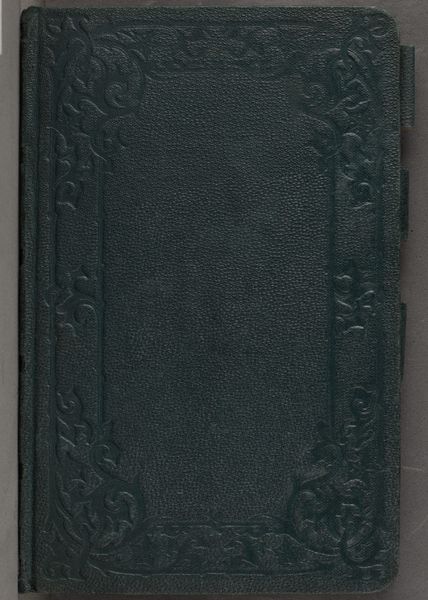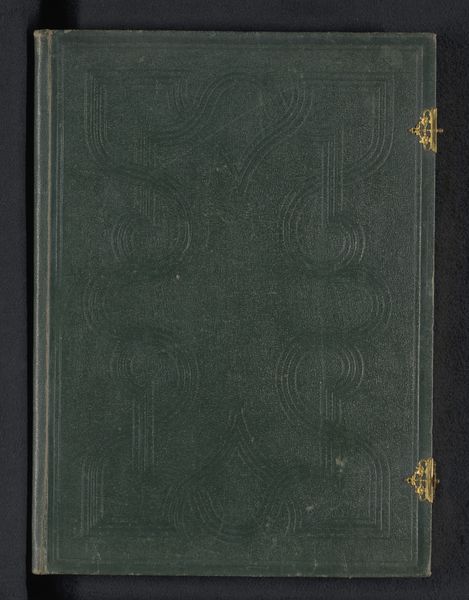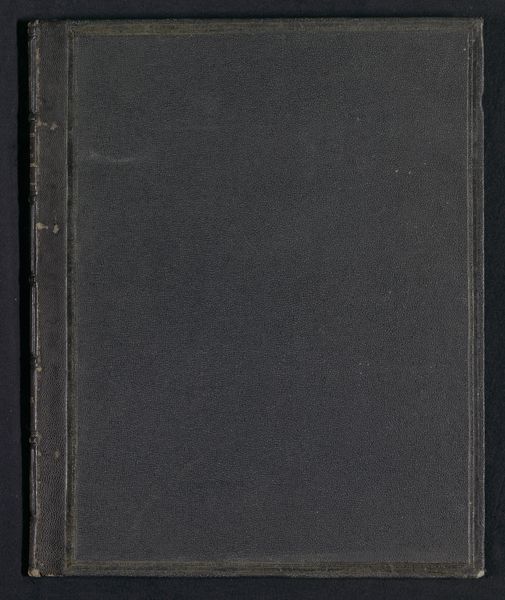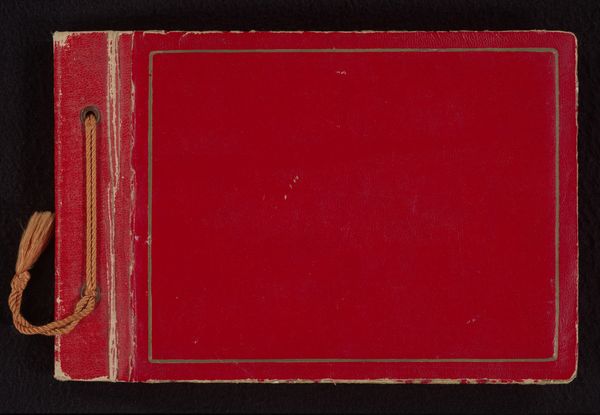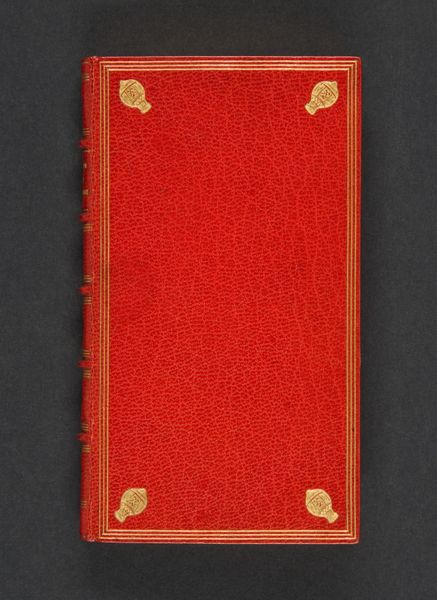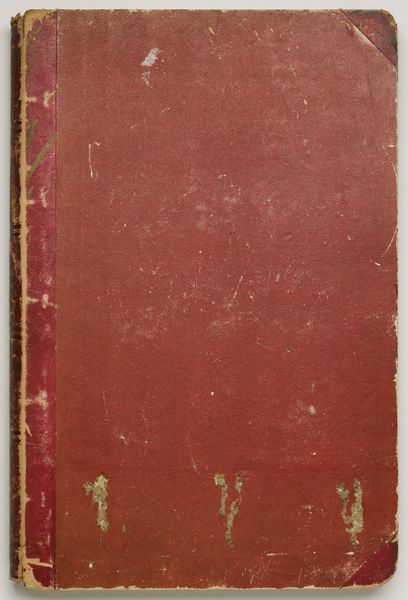
print, paper
# print
#
paper
#
coloured pencil
Dimensions: height 450 mm, width 345 mm, thickness 20 mm, width 680 mm
Copyright: Rijks Museum: Open Domain
Curator: Before us, we have "Portefeuille met de etsen van John Chalon," a print on paper by Jan Chalon, dating between 1748 and 1802. What strikes you about this piece? Editor: Immediately, the cover's color arrests my attention—a sort of aged, blood-red. There's a somber elegance to it, coupled with the tie ribbons trailing across. I feel an almost immediate sense of historical weight. How do you read its symbolism? Curator: For me, the red symbolizes the vital spirit embedded in creation, yet also sacrifice, because creativity comes at the cost of the artist’s own energy. Furthermore, the book binding evokes containment. It speaks to a wealth of unseen imagery contained within a border of sorts, holding narratives that can easily be bound and guarded by certain ideologies. Editor: I can understand how one would focus on that interpretation. Though I’d like to dig a little deeper; if the portfolio is the border and the prints held inside reflect his artistic sensibilities and views of society and/or nature, then perhaps it challenges restrictive thought because of their unbound qualities? After all, prints can be shared much easier than unique artworks that would be more exclusive. I can see how Chalon's medium has impacted democratization in terms of knowledge! Curator: That's a fascinating counterpoint. Consider, then, the choice of the cover as the external world, as the binding's strength echoes our need for symbolic order amid chaotic creation. Jan Chalon created many drawings depicting farm life; by printing many of his art, did the act diminish his work among other artists? The choice to include or exclude images in this book format echoes the historical and contemporary biases when printing works. Editor: Exactly! And it speaks to how these seemingly simple books serve as time capsules reflecting an evolving landscape of access and societal shifts that reflect broader issues in play, even now. As we navigate debates around cultural gatekeeping, reflecting on what these etchings were, it holds within its history great insight. Curator: I appreciate that broadened view. I initially framed this as personal iconography and creation, but understanding its cultural context enhances its importance immensely. Editor: Absolutely. It enriches it, even makes it even more politically urgent for understanding of access!
Comments
No comments
Be the first to comment and join the conversation on the ultimate creative platform.
